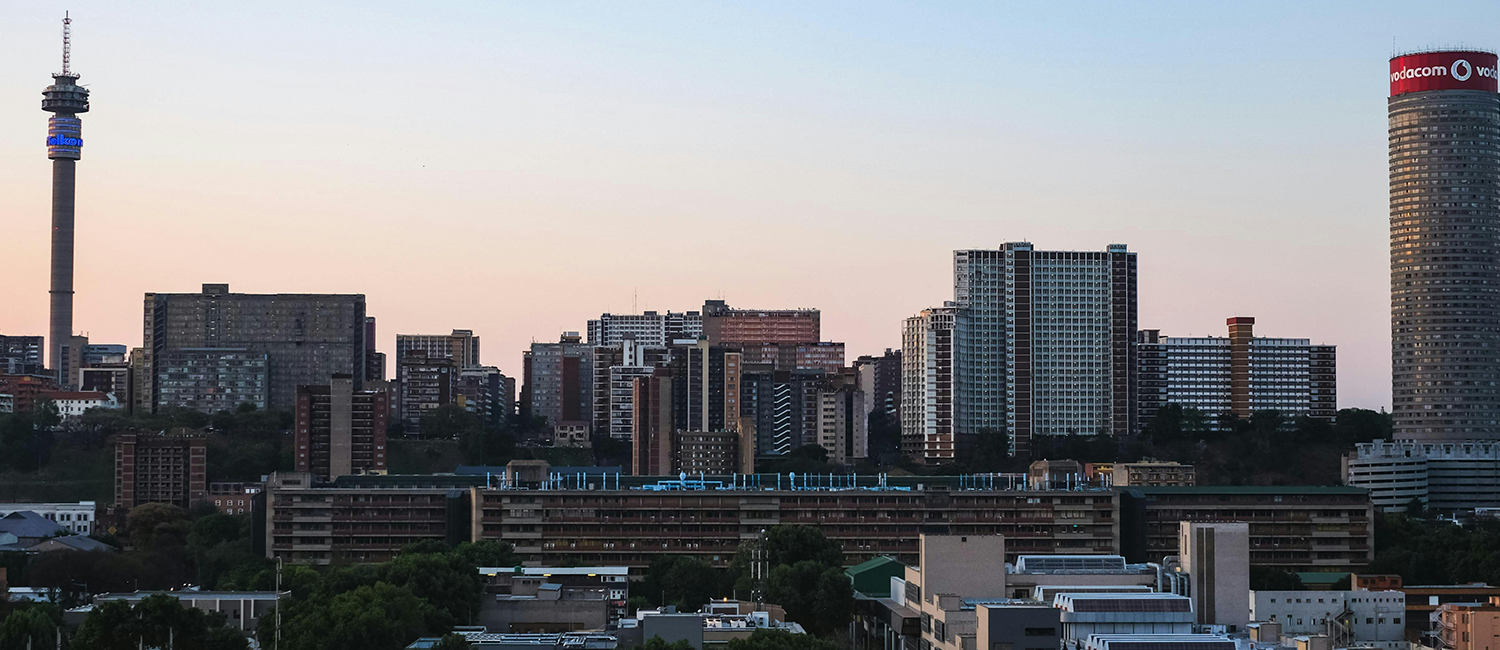Bringing opportunity to where people live, rather than making them travel long distances to work, is key to revitalizing Joburg’s townships, says Ravi Naidoo, the City’s Executive Director of Economic Development.
Launch of the Jozi@Work programmeCommunity members show their small business proposal to City of Joburg Executive Mayor Parks Tau at the official launch of the Jozi@Work programme in Eldorado Park. (Photo: www.joziatwork.org.za)The issue of apartheid-era spatial planning is a Gordian knot that the province is still battling to cut through, Economic Development MEC Lebogang Maile told the inaugural Gauteng Infrastructure Investment Conference at Gallagher Estate in Midrand on Friday, 17 July.
Apartheid town planners forced the majority of South Africans into settlement patterns designed to make them live and work in completely separate areas. “Today we are still dealing with this legacy. Most of our people live in areas that are still underdeveloped economies.”
Addressing a plenary session on the revitalization of township economies, MEC Maile pointed out that Gauteng’s townships were home to 50 000 small, medium and micro enterprises (SMMEs), making up an economy worth an estimated R100-million annually.
“There has always been economic activity in the townships,” the MEC said. The idea now is to turn these from sites of consumption to economies based on production.
HELPING INFORMAL TRADERS ENTER THE FORMAL ECONOMY
Maile shared the platform with Dr Tashmia Ismail, head of the Gordon Institute of Business Studies’ (GIBS’) Inclusive Markets Programme, who pointed out that for the first time in the country’s history, the urban population is greater than the rural. This fast growing population is being crammed into poorly serviced and poorly served areas on the fringes on metropolises.
“When we talk about revitalizing township economies, we must not forget the human needs of this population.”
Diepsloot, Ismail noted, has a 60% unemployment rate, and a working population that spends up to 40% of its income on travel to work. In areas like this, where levels of entrepreneurial activity are incredibly low, the revitalization challenge is greatest.
“How do you create an environment where business wants to invest and develop the skills of residents? How do you create circumstances where established businesses see areas like Diepsloot as a place to invest rather than just extract value?”
The first thing to do, Ismail argued, is to design programmes that help informal traders to enter the formal economy. Teaching them basic business skills such as book keeping, for example, will make it easier for them to access financing.
She highlighted a GIBS/GlaxoSmithKline programme as the kind of initiative that could make a difference. The Grand-Pa Spaza Shop Academy identifies small township-based business owners and provides them with basic business training to help them grow their businesses.
Also speaking during the session, Ravi Naidoo, the City’s Executive Director of Economic Development, pointed out that the size of Johannesburg’s economy has doubled over the last two decades, to the point where it is now the 66th largest city economy, measured by economic activity, in the world.
While the city’s financial and business services industry has grown, however, its manufacturing base has eroded. “This has affected the type of skills that are drawn to the city,” Naidoo said. Newcomers to the city without the skills to find work in the sectors the City has identified as focus areas – financial and business services, transport and logistics, ICT, retail, tourism, health and education, niche manufacturing and the green economy – still need to be accommodated.
TOWARDS THE INDUSTRIAL TRANSFORMATION OF TOWNSHIPS
Johannesburg offers the gravitational pull of opportunity, Naidoo explained, even to those without skills the market is looking for, who eventually find themselves housed in areas away from economic activity. “This is the biggest complication, the history of spatial distortion, we have to consider when we talk about economic transformation.”
Industrial transformation of townships is one solution the City has propounded. The idea is to bring opportunity to the areas where people live, rather than forcing them to travel long distances to work.
Jozi@work, a billion-rand empowerment programme, uses local suppliers and contractors to supply services to the city, and along private sector value chains, to stoke community development. It allows people to build businesses in the townships and employ young people close to home.
The City has set up programmes to help young people get work-ready, and has found there are constraints that needed to be addressed at provincial and national level. “We have the largest enterprise development programme – Jozi@work – in the country, but we face skills and education constraints, neither of which are City functions,” Naidoo said.
While unable to have a real impact on national and provincial education and skills development, through the Vulindlela eJozi programmes the City has trained 200 000 young people in soft skills to help them find work. “Something as simple as how to apply for a job is often a skill that many of Johannesburg’s young people lack. Both Jozi@work and Vulindlela eJozi are innovative programmes that help to create opportunity and deal with the issue of unemployment in townships.”
These programmes are just two aspects of the City’s plans to radically transform the economy of Joburg, and by extension the townships that surround it. Enterprise development will be driven by five imperatives: improving service delivery to businesses, creating priority economic zones, creating business clusters, improving the time it takes to green-light job creating investments, and creating additional SMME hubs.
The city remains the economic hub of the country, but sees itself as far more. “When we look at infrastructure investment, how we see ourselves in relation to the rest of the continent is just as important as our prominence in the national economy,” Naidoo said.
Manufacturing offers new job seekers a first step on the ladder to lifelong employment. The city sees niche manufacturing, aimed at servicing smaller markets in the country and the region, as one way to re-establish Johannesburg’s manufacturing industry.
“We are closer to Gaborone than Cape Town, we are a transhipment hub into Africa, and we have an industrial base and labour to meet the needs of our neighbours. If we can grow industries to meet niche needs, then we can diversify and expand our economic base.”

